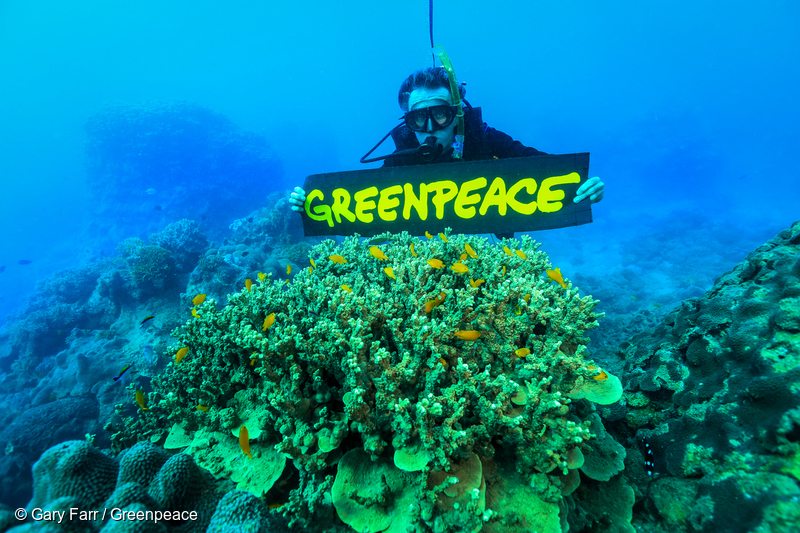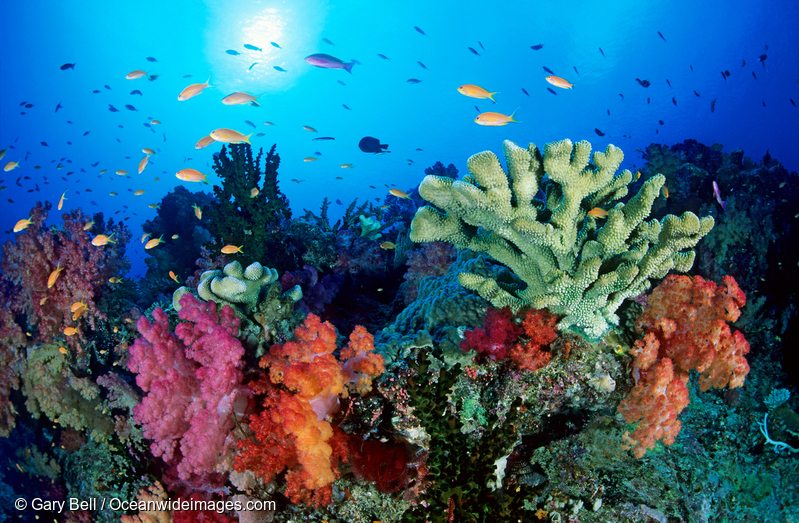After Apollo 11 landed on the moon, Buzz Aldrin said: ”When I first looked back at the Earth, standing on the Moon, I cried.”

I haven’t been to the moon, but there are a bunch of other things I’ve seen for the first time that made me cry: the birth of my children, Barack Obama’s first speech as the US President, and when I first snorkeled the Great Barrier Reef over thirty years ago.
When you see some things, they change you and you can’t unsee them. The Reef is like that for me. One of the seven wonders of the natural world, it’s larger than the Great Wall of China and the only living thing on earth visible from space. Yes that’s right, it’s a living thing, precious and fragile like other living things.
Recently, I joined a Greenpeace team documenting the effect of El Nino – is a naturally occurring event characterised by warmer sea temperatures. In climate modelling, El Nino events are predicted to happen more often and be more severe as global temperatures increase and rising sea temperatures on the Reef. We took some “before” pictures to bear witness to the devastation of coral bleaching that scientists warn may happen this year. Bleaching takes place when high water temperatures cause coral to expel its zooxanthellae – algae which gives coral both its color and much of its nutrients. If these micro-organisms re-inhabit the coral within a short time, the coral may recover, but if not the coral dies and the reef can take decades to recover – if it ever recovers at all.
Mass bleaching incidents occurred in 1998 and again in 2002, when 60 per cent of Queensland’s reefs were affected.
Just as beautiful things change you when you see them, so too does tragedy. Some of the coral we saw on this trip was brown, damaged by cyclones and poor water quality, and so very different to the vibrant Reef I saw thirty years ago. The sight breaks your heart and fires you up to stop the carnage. I was struck with the need to protect it like I would my own children, and for them to see the same beauty that so touched me thirty years ago.
German cosmonaut Sigmund Jähn said: “Before I flew I was already aware of how small and vulnerable our planet is; but only when I saw it from space, in all its ineffable beauty and fragility, did I realize that humankind’s most urgent task is to cherish and preserve it for future generations.”
Viewed from outer space, the borders between countries, the distinction between human and nonhuman, rich and poor, man and woman, all become trivial. Nature sets its own boundaries. These are the ones that count and we need to respect them. Nature speaks in heart shaped reefs, as if to remind humans to have a heart.
Now we hold our breath and cross our fingers, hoping that the Reef doesn’t bleach. And whether it does or not, we recommit to fighting anything that threatens the Reef.


